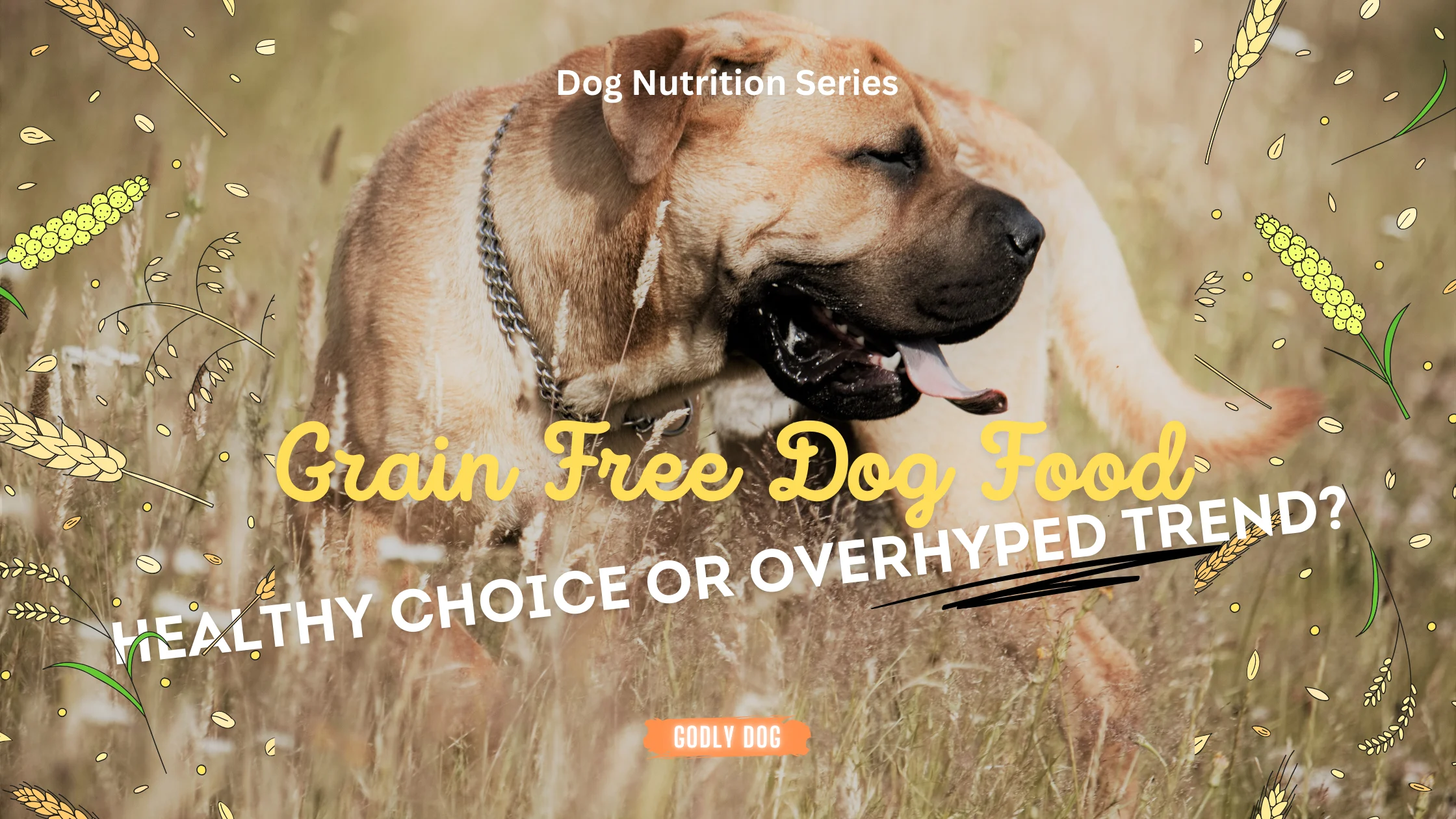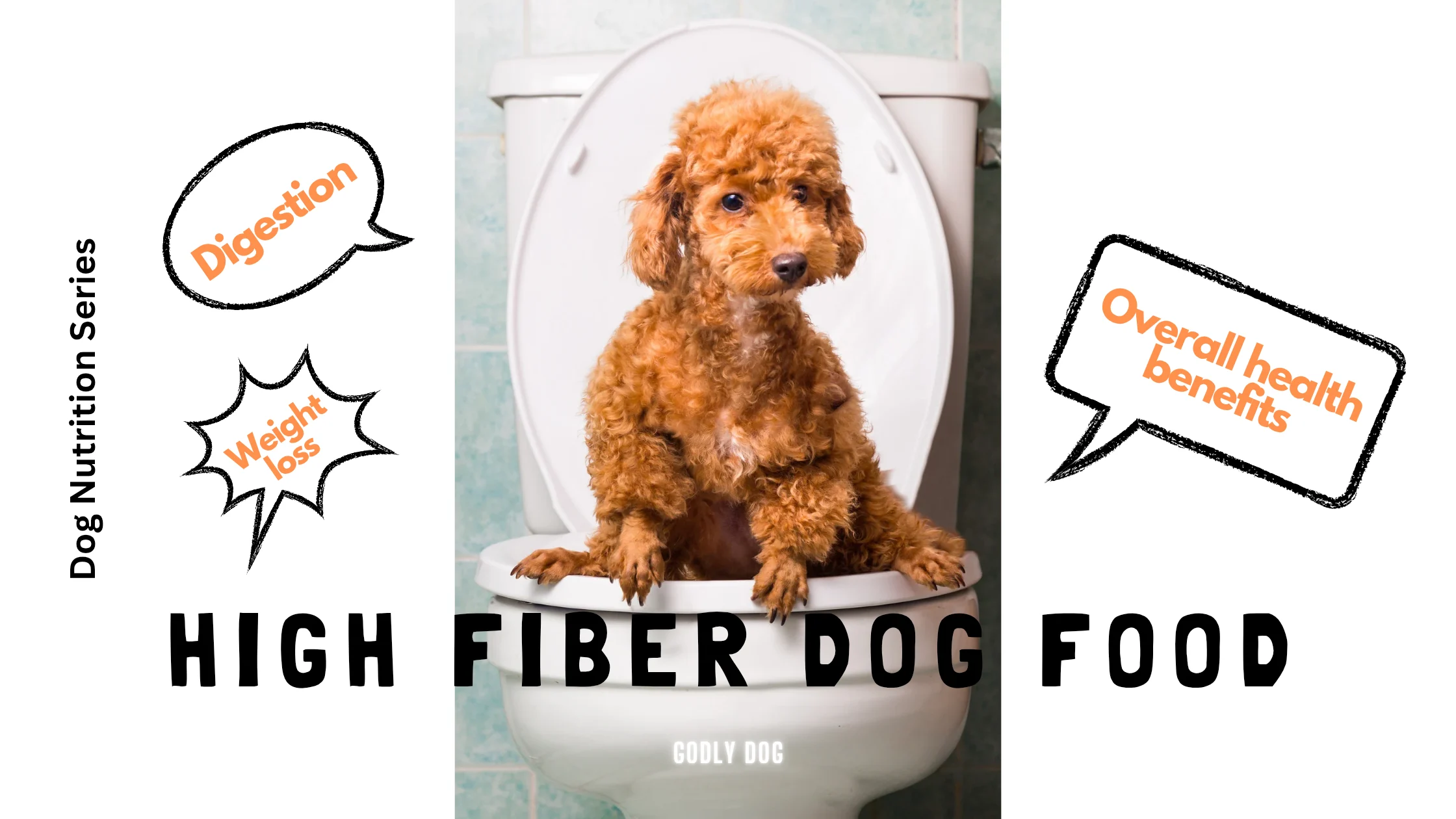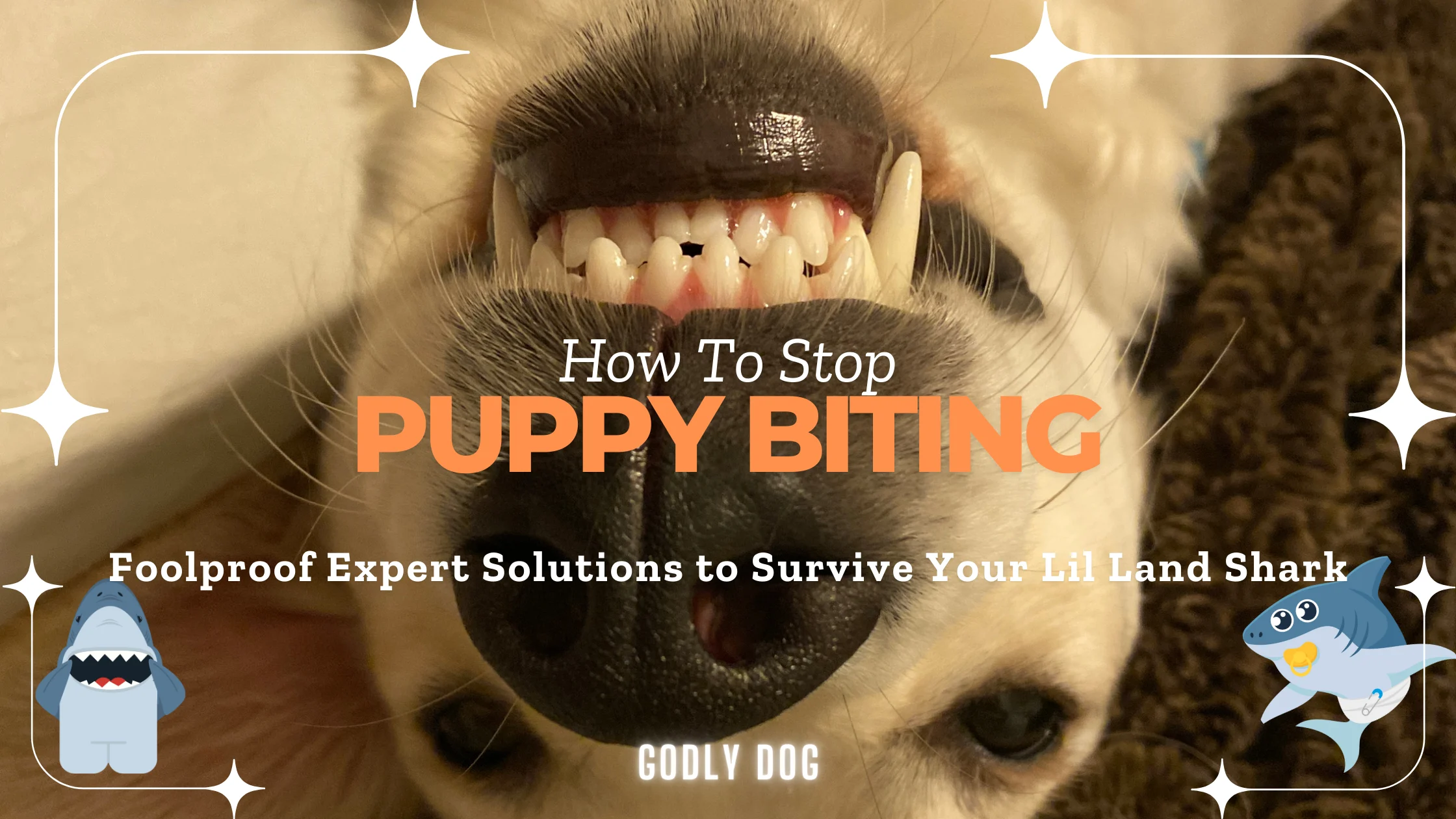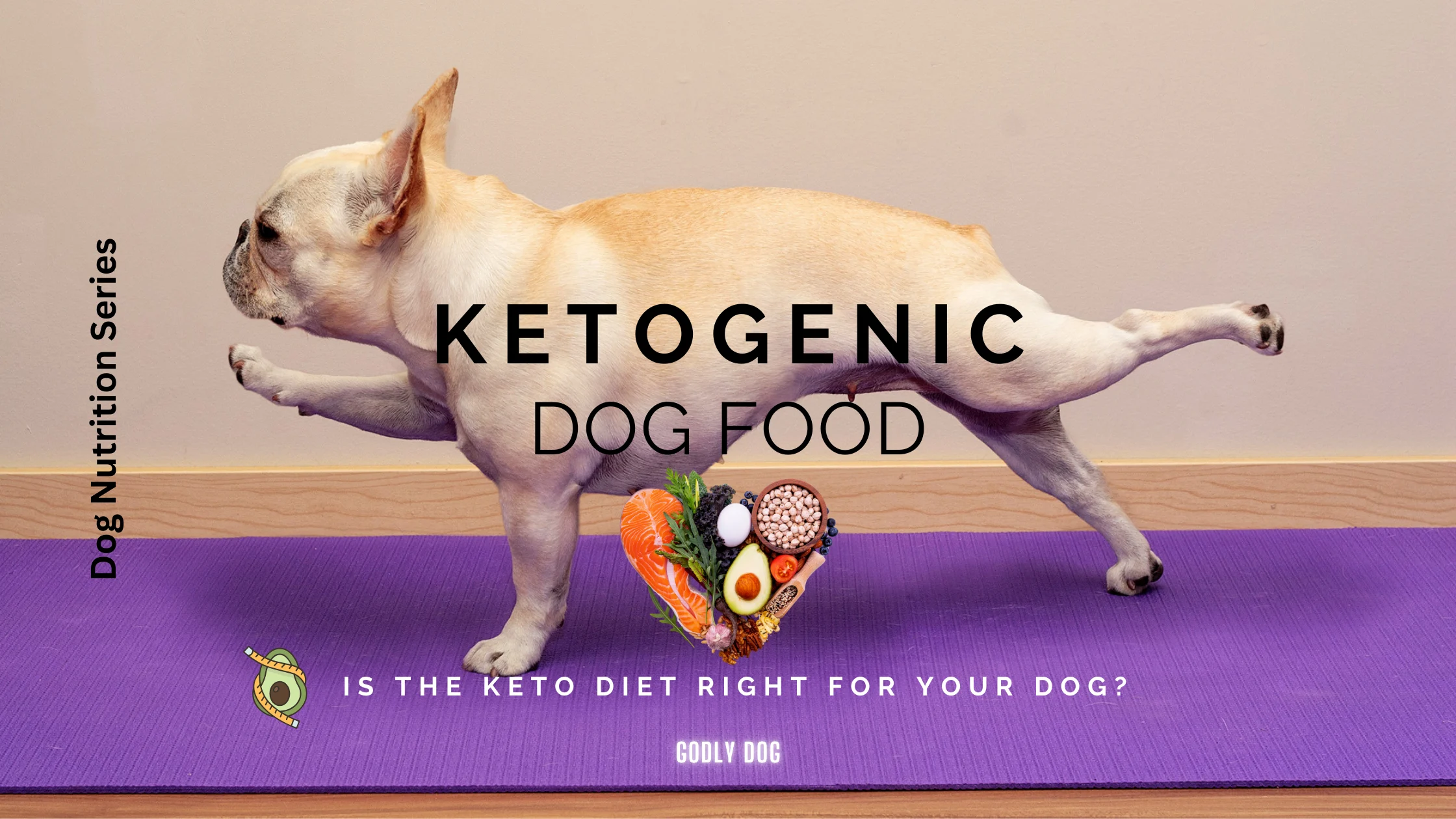Grain Free Dog Food Explained: Benefits, Risks & How to Choose

What Is Grain-Free Dog Food?
Grain-free dog food has become a hot topic in the pet world, with many dog parents switching to it in hopes of better digestion, fewer allergies, and overall improved health. But what exactly does “grain-free” mean?
At its core, grain-free dog food eliminates common grains like:
- ● Wheat
- ● Corn
- ● Rice
- ● Oats
- ● Barley
Instead, brands replace these ingredients with alternative carbohydrate sources such as:
● Sweet potatoes – A nutrient-rich, easily digestible carb.
● Peas and lentils – Often used in grain-free kibble but controversial (more on that later).
● Chickpeas and beans – Protein-packed alternatives.
Many pet food companies market grain-free dog food as the healthier choice, claiming it mimics a dog’s ancestral diet. However, before you jump on the trend, it’s important to understand whether it’s truly beneficial—or just a clever marketing strategy.
The Benefits of Grain-Free Dog Food
Often marketed as a premium choice, promising everything from better digestion to a shinier coat, but does it really live up to the hype? Let’s break down the key benefits.
1. May Reduce Allergies and Food Sensitivities
One of the biggest reasons dog parents consider switching to grain-free dog food is the fear of grain allergies. But here’s the truth: grain allergies in dogs are rare. Most food allergies are triggered by proteins like chicken, beef, or dairy—not grains.
However, if your dog does have a sensitivity to wheat or corn, grain-free dog food can help ease symptoms like:
● Itchy skin
● Frequent ear infections
● Digestive upset (vomiting, diarrhea, or gas)
2. Easier Digestion for Some Dogs
While grains aren’t inherently bad, some dogs struggle to digest them—especially low-quality fillers like corn or wheat gluten. Grain-free dog food often uses easier-to-digest ingredients like sweet potatoes, which can be gentler on a sensitive stomach.
3. Higher Protein Content
Dogs are not strict carnivores, but they do thrive on protein. Many grain-free formulas contain higher meat content, which can be beneficial for:
● Active or working dogs that need extra fuel
● Muscle maintenance and growth
● Better energy levels
That being said, not all grain-free dog food is high in protein. Some brands replace grains with excessive legumes and starches, which brings us to an important point—not all grain-free diets are created equal.
4. Potentially Healthier Skin and Coat
A high-quality diet, whether grain-free or not, can improve a dog’s skin and coat health. Many grain-free dog foods contain omega fatty acids from sources like salmon, flaxseed, and fish oil—nutrients that help keep your dog’s coat shiny and skin irritation-free.
But Is Grain-Free Dog Food Always the Best Choice?
While these benefits sound great, grain-free dog food isn’t always necessary—or even better—for every dog. In the next section, we’ll look at the downsides you need to consider before making the switch.
The Disadvantages of Grain-Free Dog Food
Grain-free dog food sounds like the ultimate health upgrade, but before you ditch your dog’s current diet, let’s talk about the potential drawbacks. While some dogs thrive on grain-free formulas, others might not benefit as much as the marketing suggests.
1. Not All Grains Are Bad
Grains have been unfairly demonized in the pet food industry. The truth? Whole grains like brown rice, oatmeal, and barley provide valuable nutrients, including:
✔ Fiber for digestion
✔ B vitamins for energy
✔ Antioxidants for immune support
Unless your dog has a confirmed grain allergy or sensitivity, there’s no compelling reason to avoid grains altogether. In fact, some grain-free dog food brands replace grains with even more starches (like potatoes and peas), which don’t necessarily offer better nutrition.
2. The FDA’s Investigation: The Heart Disease Controversy
One of the biggest controversies surrounding grain-free dog food is the potential link to dilated cardiomyopathy (DCM)—a serious heart condition.
The FDA launched an investigation in 2018 after veterinarians noticed an increase in DCM cases, particularly in dogs eating grain-free diets that relied heavily on peas, lentils, and legumes. While the exact cause isn’t confirmed, the concern is that these ingredients might interfere with taurine absorption, an essential amino acid for heart health.
Does this mean grain-free dog food causes heart disease? Not necessarily. But if you’re feeding a grain-free diet, check the ingredient list. If peas, lentils, or potatoes dominate the top five ingredients, it might be worth reconsidering.
3. Overuse of Legumes & Peas
Many grain-free dog foods swap grains for peas, chickpeas, and lentils—but here’s the catch:
❌ Too many legumes can lower taurine levels, potentially affecting heart health.
❌ Some brands use them as cheap fillers, rather than high-quality protein sources.
❌ Peas and legumes can cause digestive issues in some dogs, leading to bloating or gas.
If you’re going grain-free, choose a brand that prioritizes real meat as the primary ingredient—not just a bunch of legumes disguised as “protein.”
4. Grain-Free Doesn’t Mean Carb-Free
Some dog parents assume grain-free = low-carb. Unfortunately, that’s not always true. Many grain-free dog foods replace grains with starchy vegetables, which can actually lead to higher carbohydrate content than grain-inclusive diets.
For example, a formula heavy in potatoes, tapioca, or peas may cause blood sugar spikes—not ideal for dogs prone to weight gain or diabetes. Always check the label and opt for high-protein, moderate-carb options.
5. Expensive & Overhyped?
Let’s be real—grain-free dog food can cost a small fortune. Many brands charge a premium, marketing it as a superior choice, but in reality, a well-balanced grain-inclusive diet can be just as nutritious (and more budget-friendly).
If your dog doesn’t have grain sensitivities, you might be paying extra for a trend rather than a real health benefit.
So, Is Grain-Free Dog Food Bad?
Not necessarily—it depends on your dog. Some dogs thrive on grain-free diets, while others do just fine with grains. In the next section, we’ll break down how to decide what’s best for your pup.
Grain-Free vs. Grain-Inclusive: Which One Is Right for Your Dog?
By now, you know that grain-free isn’t automatically better or worse—it all depends on your dog’s unique needs. So how do you decide whether to go grain-free or stick with a grain-inclusive diet? Let’s compare.
Grain-Free Dog Food
✅ Best for dogs with grain allergies or sensitivities
✅ May improve digestion in some dogs
✅ Often higher in protein (but not always!)
❌ Can be high in peas, legumes, and potatoes, which may impact heart health
❌ More expensive, but not necessarily more nutritious
Grain-Inclusive Dog Food
✅ Provides fiber and essential nutrients from whole grains
✅ More research-backed for long-term health
✅ Often more budget-friendly
❌ Some grains (like wheat and corn) can trigger allergies in rare cases
❌ Not ideal for dogs with grain sensitivities
When to Choose Grain-Free Dog Food
✔ If your dog has been diagnosed with a grain allergy (by a vet).
✔ If your dog has consistent digestive issues with grains.
✔ If your dog thrives on a higher protein diet.
When to Stick with Grain-Inclusive Dog Food
✔ If your dog has no grain allergies or sensitivities.
✔ If you want a well-researched, balanced diet.
✔ If your dog is prone to heart issues and you want to avoid DCM concerns.
The Bottom Line
Grain-free dog food isn’t automatically healthier—it’s just different. The best diet for your dog depends on their individual needs, health conditions, and how they respond to food.
How to Choose the Best Grain-Free Dog Food
Not all grain-free dog food is created equal. Some are packed with high-quality ingredients, while others are just overpriced bags of fillers. If you’re considering a grain-free diet for your dog, here’s how to make sure you’re choosing a nutritionally balanced, high-quality formula—not just falling for marketing hype.
1. Check the Ingredient List—Meat First!
The best grain-free dog food should have real animal protein as the first ingredient. Look for:
✔ Named meats like chicken, beef, turkey, lamb, or fish (not vague terms like “meat meal”)
✔ High-quality meat meals (e.g., “chicken meal” or “salmon meal” is fine—it’s just a concentrated protein source)
✔ Organ meats like liver and heart for added nutrition
Avoid:
❌ Foods that list “peas,” “potatoes,” or “lentils” before the protein source—this means you’re paying for fillers instead of quality protein.
2. Beware of Too Many Peas and Legumes
One of the biggest concerns with grain-free dog food is the overuse of peas, lentils, and chickpeas. While these ingredients aren’t bad in moderation, some brands overload their formulas with them, which may contribute to taurine deficiency and heart issues.
✔ Look for meat-based protein rather than pea-based protein.
✔ If peas, lentils, or chickpeas appear multiple times in the top 5 ingredients, reconsider the formula.
3. Balance of Protein, Fat, and Carbs
A good grain-free diet should be high in protein, moderate in fat, and lower in carbohydrates. Many grain-free formulas substitute grains with excessive starches, which can lead to weight gain.
✔ Protein: Aim for 30% or higher for active dogs; at least 22% for average dogs.
✔ Fat: A healthy range is 12-20% for most dogs.
✔ Carbs: Should come from nutrient-rich sources like sweet potatoes rather than excessive legumes or tapioca.
4. Look for Omega Fatty Acids
A good diet supports healthy skin and coat, and omega-3 and omega-6 fatty acids are essential for this. Check for ingredients like:
✔ Salmon oil
✔ Flaxseed
✔ Chia seeds
These help reduce inflammation, keep your dog’s coat shiny, and support joint health.
5. Avoid Artificial Additives
The best grain-free dog food should be free from unnecessary fillers and artificial ingredients. Avoid:
❌ Artificial preservatives (BHA, BHT, ethoxyquin)
❌ Artificial colors and flavors
❌ Excessive salt or sugar
Instead, look for natural preservatives like mixed tocopherols (vitamin E) and rosemary extract.
6. Consider Your Dog’s Age, Size, and Activity Level
Grain-free formulas aren’t one-size-fits-all. Choose a diet that matches your dog’s specific needs:
✔ Puppies need higher protein and DHA for brain development.
✔ Seniors benefit from joint-supporting ingredients like glucosamine.
✔ Active or working dogs require higher calories and protein.
✔ Small breeds do well with smaller kibble sizes, while large breeds need joint-supporting nutrients.
7. Choose Brands with Transparent Testing & Sourcing
A trustworthy dog food brand should clearly state:
✔ Where their ingredients come from (avoid mystery meat from unknown sources).
✔ If their food undergoes feeding trials (this is a strong indicator of quality).
✔ If they employ veterinary nutritionists to formulate their diets.
8. Watch Your Dog’s Reaction
Even the highest-rated grain-free dog food won’t work if it doesn’t suit your dog. After switching, monitor for:
✔ Improved energy, coat quality, and digestion
❌ Signs of stomach upset (diarrhea, gas, or vomiting)
❌ Unexplained weight gain or loss
If your dog isn’t thriving, don’t hesitate to adjust their diet or even replace it with a better nutritious alternative—grain-free isn’t the only path to good health!
Final Tip: Don’t Be Swayed by Marketing Gimmicks
Buzzwords like “holistic,” “premium,” and “natural” don’t mean much. Always check the ingredient list and nutritional breakdown instead of relying on the front label.
Grain-Free Dog Food FAQs

Still have questions? You’re not alone! Here are the most common questions dog parents ask—with straight, no-fluff answers.
1. Is grain-free dog food better than regular dog food?
Not necessarily. Grain-free dog food is only better if your dog has a specific grain allergy or sensitivity. Otherwise, a high-quality grain-inclusive diet can be just as nutritious (and sometimes better balanced).
2. Do dogs really need grain-free food?
Most dogs do not need grain-free food. Unless your vet has diagnosed your dog with a grain allergy (which is rare), there’s no proven benefit to removing grains from their diet.
3. Can grain-free dog food cause heart disease?
The FDA has investigated a possible link between grain-free diets and dilated cardiomyopathy (DCM), a serious heart condition. The concern is that many grain-free formulas rely heavily on peas, lentils, and potatoes, which may interfere with taurine absorption. However, research is still ongoing, and not all grain-free diets pose a risk.
4. What grains are actually good for dogs?
Not all grains are bad! Some nutritious options include:
✔ Brown rice – Easily digestible and full of fiber.
✔ Oatmeal – Great for dogs with sensitive stomachs.
✔ Barley – Provides energy and essential nutrients.
✔ Quinoa – A protein-rich, gluten-free grain.
These grains offer fiber, vitamins, and minerals that benefit your dog’s overall health.
5. What ingredients should I avoid in grain-free dog food?
❌ Too many peas, lentils, and chickpeas (especially if they appear multiple times in the top 5 ingredients).
❌ Artificial preservatives and colors (like BHA, BHT, or artificial dyes).
❌ High-carb fillers like tapioca or excessive potatoes.
6. Does grain-free mean low-carb?
Nope! Many grain-free dog foods actually contain more carbs than grain-inclusive diets because they replace grains with starchy vegetables like potatoes or tapioca. If you’re looking for low-carb dog food, check the actual carbohydrate content—not just the “grain-free” label. Here’s my thorough guide on how to read dog food labels right.
7. Is grain-free food good for dogs with allergies?
It depends on the allergy. Many dogs with food allergies are actually reacting to chicken, beef, or dairy—not grains. If your dog has itchy skin or digestive issues, consider an elimination diet before switching to grain-free food.
8. Can puppies eat grain-free food?
Puppies can eat grain-free food, but it’s not necessary unless recommended by a vet. Make sure the food is labeled “complete and balanced” for growth and contains essential nutrients like DHA for brain development.
9. What’s the best way to switch to grain-free dog food?
Transition slowly over 7-10 days to avoid digestive upset:
✔ Days 1-3: 25% new food, 75% old food
✔ Days 4-6: 50% new food, 50% old food
✔ Days 7-9: 75% new food, 25% old food
✔ Day 10+: 100% new food
Watch for signs of stomach upset, and adjust if needed.
10. What’s the best/healthiest grain-free dog food option?
The best or healthiest option should have:
✔ Real meat as the first ingredient
✔ Moderate carbs (not overloaded with peas or potatoes)
✔ Healthy fats like salmon oil or flaxseed
✔ No artificial additives

Srijana, founder of Godly Dog, brings 12+ years of experience caring for dogs, including her 6 fur kids: a Labrador, 2 Spitz, and 3 Indie rescues. She has studied natural dog nutrition and behavior to better understand and care for them. A passionate advocate for strays and a dedicated volunteer, she believes dogs embody godliness, inspiring unconditional love and selflessness. Through Godly Dog, she shares practical advice to ensure every dog gets the love, care, and respect they deserve.



